Tat will do nicely for new marine litter campaign


Surfers Against Sewage has launched a ‘Save Our Seas’ Marine Litter Tattoo campaign to highlight the growing scale and permanence of the marine litter crisis.
The ‘Save Our Seas’ Marine Litter Tattoo campaign takes its inspiration from highly stylised maritime tattoos that are synonymous with the sea and those connected to it – mariners, sailors, fishermen, seafarers, explorers and in more recent times, surfers. As tattoos, the designs convey a strong sense of permanence, something that the marine litter crisis is threatening if urgent action is not taken soon.
The campaign highlights some of the most pervasive litter items washing up on our beaches, including the single-use plastic bag, the plastic water bottle, the aluminium can and discarded fishing gear.
The amount of litter recorded on UK beaches in 2014 was at its highest level ever with 2,457 pieces found for every kilometre of coastline surveyed, representing a 6% increase on 2013 levels.
The campaign was created by award-winning advertising agency M&C Saatchi in association with acclaimed American tattoo artist Nick The Tailor.
Picture credit: SAS
U.S. Files Climate Commitment in Advance of Paris Talks
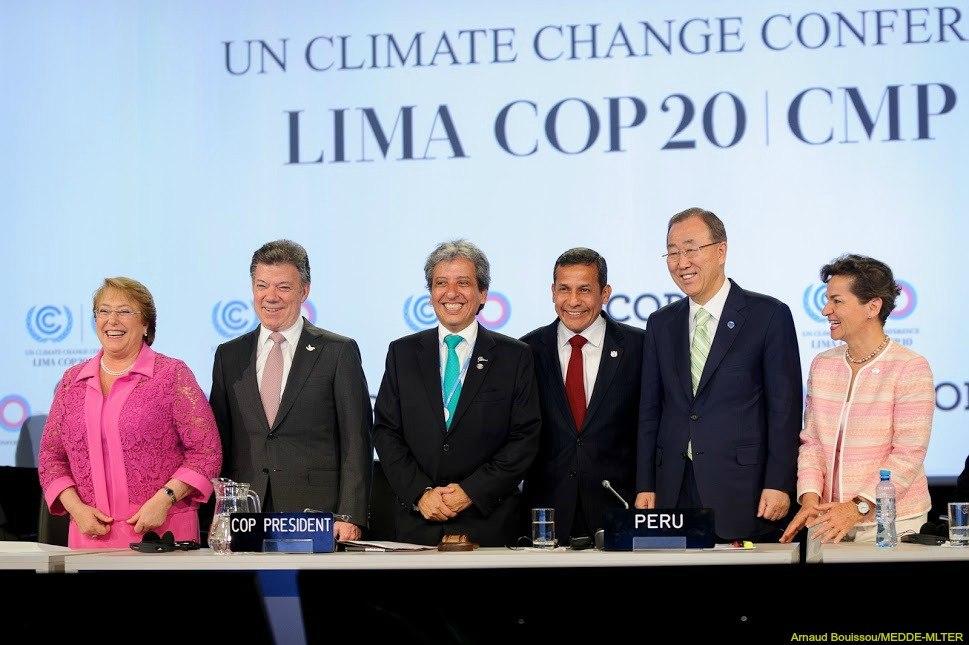

On Tuesday, the U.S. became the latest country to submit a climate action plan to the United Nations in advance of the Paris climate conference.
The U.N. Framework Convention on Climate Change (UNFCCC) asked countries to submit a strategic plan -- detailing how they will reduce greenhouse gas emissions and combat climate change -- by a March 31 deadline.
By submitting its plan, the U.S. joins more than 30 countries that released national commitments to the forthcoming global climate change agreement, to be reached in Paris in December. Others include Switzerland, Norway, Mexico and all the countries covered under the European Union.
Some 194 nations plus the EU are signatories to the UNFCCC climate change treaty, which was enacted in 1994.
Forging a new climate treaty and successor to the Kyoto Protocol has proven difficult. Negotiations have been hindered by disagreements over the shared responsibility of developed and developing nations for past and present GHG emissions. Debates over how developing nations should implement climate strategies -- and where the money and expertise will come from -- have also proved to be longstanding obstacles.
America's commitment to a global treaty on climate change
In its plan, the U.S. pledged to reduce national carbon emissions by as much as 28 percent from 2005 levels by 2025. The commitment “essentially formalizes an identical pledge President Barack Obama made during a November summit in China,” energy and environment reporter Alan Neuhauser wrote in the U.S. News & World Report on Tuesday.
Collectively, the 33 nations that filed their commitments by the initial deadline represent nearly 60 percent of worldwide anthropogenic carbon emissions, Neuhauser pointed out.
Encompassing a variety of executive actions undertaken by President Obama, realization of its UNFCCC climate commitment would put the U.S. on track to reduce carbon emissions “on the order of 80 percent by 2050,” White House senior adviser Brian Deese told reporters during a March 31 conference call.
"The administration's climate work will help meet the ambitious but achievable goal we have submitted today. We have the tools we need to meet this goal and take action on pollution. And we know this is good for our economy, good for our health and good for our future."
Momentum builds
Hopes that a new global climate treaty will be reached in Paris are rising as of late, as some of the world's largest polluters announce more aggressive GHG reduction targets and plans to ramp up clean energy and energy efficiency solutions.
China's new and strengthened policy of reducing air and environmental pollution doesn't hurt prospects either. A renewed spirit of cooperation was also evident by the Chinese government's pledge to reduce the carbon intensity of its economy and cap its carbon emissions by 2030. Those pledges came about as part of joint China-U.S. climate announcement issued during President Obama's visit to China earlier this year.
China and the U.S. are the largest sources of anthropogenic carbon emissions in the world. Similarly, Prime Minister Narendra Modi of India – the world's fourth-largest source of carbon emissions – and President Obama announced a new cooperative agreement on clean energy and climate change this past January.
This growing momentum comes amid word from national and international climate monitoring organizations that 2014 was the warmest year on record.
Mean global surface temperature last year was 0.57 degrees Celsius higher than the 1961-1990 average, edging out 2005 and 2010 as the warmest year on record, according to the U.N. World Meteorological Organization. According to the NOAA (National Oceanic and Atmospheric Administration), global temperatures averaged 0.68 degrees Celsius (1.24 degrees Fahrenheit) above their long-term average in 2014. Fourteen of the 15 warmest years on record have occurred since the turn of the century.
The increased temperature isn't evenly distributed around the world, nor are the manifold effects on ecosystems and societies. This has climate scientists and government leaders increasingly concerned about our warming planet's potential to spark exoduses and resource conflicts in hard-hit regions, small island and lesser-developed nations in particular.
Image credits: UNFCCC
ADM Bows to Shareholder Pressure, Commits to New Deforestation Policy
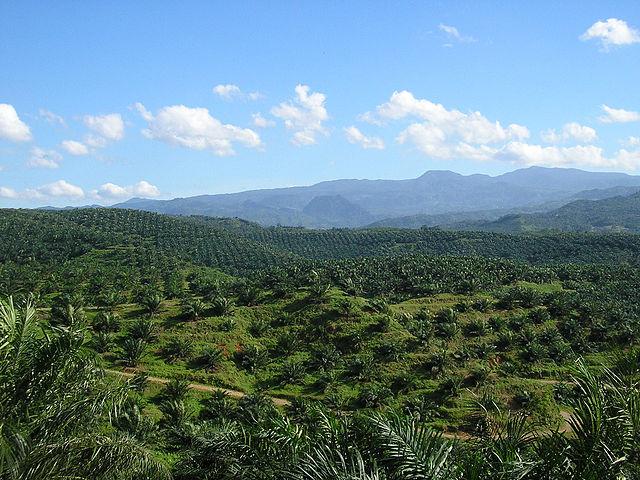

Palm oil and soy have created festering social and ecological problems over the past several years for a bevy of reasons. In the case of palm oil, food manufacturers shifted away from hydrogenated oils, which are bad for your heart, to an ingredient that is bad for the Earth’s lungs. The surging demand for palm oil has led to deforestation, human rights violations and the destruction of wildlife habitat, notably in Indonesia and Malaysia. WWF has also decried the threat of mono-crop palm oil plantations in Africa and Latin America.
Soy production has also been problematic, with the conversion of the Amazon rain forest into vast soybean plantations that supply animal feed and meet the growing demand for protein worldwide. In addition to soil erosion and pesticide runoff, many small farmers have been pushed off their land as soy has become the commodity of choice on large plantations in Argentina, Brazil and Paraguay.
Now the food and commodities giant ADM, which has reached over US$80 billion in revenues, says it will develop a no-deforestation policy in a move to source soy and palm oil more responsibly. The change occurred after a shareholder proposal, submitted by Green Century Capital Management and the New York State Common Retirement Fund, requested that ADM set quantitative goals for a reduction in supply chain impacts from deforestation.
Usually shareholder activism poses a huge uphill battle when it comes to convincing companies to change their business practices. In this case, however, ADM decided to rework its policy on how it sources these raw materials. The announcement will be made next month at ADM’s annual shareholder meeting. In return, Green Century Capital Management and the pension fund agreed to pull the shareholder proposal. So, what is going on?
Part of the reason for this changing tone in the food production sector is the growing revulsion at what is occurring within the palm oil industry. The emotional appeal over the destruction of orangutan habitat, for example, is a difficult one to ignore. Furthermore, at a time of growing desertification, drought and environmental degradation, the surging demand for soy and palm oil threaten the world’s rain forests — the destruction of which contributes even more carbon emissions into the Earth’s atmosphere.
According to Green Century Capital Management, ongoing droughts and extreme weather have contributed to a decline in ADM’s profits over the past few years. Reining in the producers and suppliers of soy and palm oil in order to clean up the global food industry is one way to decrease risks related to climate change. In addition, improved environmental stewardship will secure the viability of these corporations’ operations — a point the activist investor NGO Ceres has been making to companies in all sectors for over 25 years.
Customer preferences are also changing as more have become aware of these products' impacts on the planet and people. In the case of soy, consumption of soy milk here in the United States has been in decline. The soy latte inhalers of a few years ago have switched to almond milk, which of course is also problematic. Similar trends could happen to food products containing palm oil if improvements are not made soon.
Some companies, including Dr. Bronner’s, avoid sourcing palm oil from Southeast Asia period. Other firms, such as ADM, are following the standards of the Roundtable on Sustainable Palm Oil, which recently kicked out some members that were not complaint with the organization’s reporting requirements.
Meanwhile, the dominoes in the industry keep falling, and in a more positive way. Cargill, the largest palm oil supplier in the U.S., has shifted toward a more sustainable palm oil sourcing policy. Last summer, ConAgra said it would do the same after shareholder pressure. In contrast, the movement to switch toward more responsible soy has been quiet. Hopefully ADM’s announcement will give those organizations working on cleaning and greening the soy industry a second wind.
Image credit: Achmad Rabin Taim
Why Making an Impact is Good for Recruitment, Retention and Production
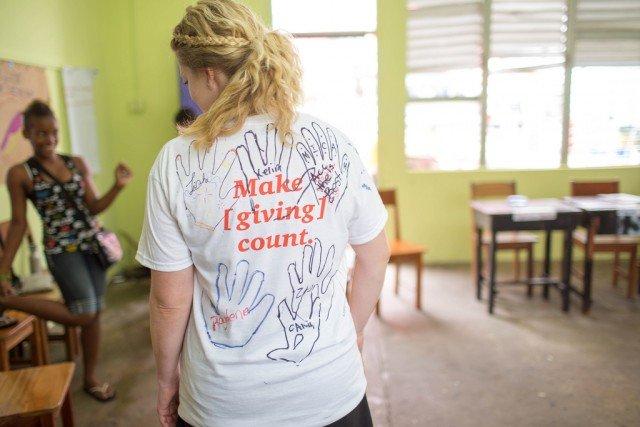

By Bob Murphy
By 2020, nearly half of all U.S. workers will be millennials: those born between 1976 and 2001. The new crop of millennials looking for jobs -- educated, worldly, savvy people with strong resumes behind them -- have a different vision of what they want in a career than the jobseekers who came before them. If you’re not tuned into their needs, you’re missing out on top talent, and those same future leaders might be going to your competitors.
So, what is it they’re looking for? Millennials aren’t looking just for money, power or prestige, but rather something a little less tangible and much less selfish: They’re looking to make a difference in the world around them. According to a study by the Boston Consulting Group, millennials are more altruistic and cause-focused than previous generations, and they believe that “working for causes is an integral part of life.”
Reaching this new generation of employees and consumers in a meaningful way requires businesses to think about how they can build their purpose into the ethos of their business to bring employees in the door, keep them around and grow them into tomorrow’s leaders.
What is purpose?
Business purpose can be difficult to define: While for some NGOs and nonprofits it’s as straightforward as “delivering clean water to those who need it” or “giving microloans to female business owners in India,” the majority of businesses don’t operate with such a clear, central or cause-focused mission.
However, purpose still exists in those businesses: It can be a strong corporate social responsibility initiative, a focus on creating jobs and economic impact as your sales increase, or a mission to support employees meaningfully. While business purpose can vary, it’s important to make sure people know about it: It’s one of the best things for your recruitment, employee retention and production.
Above all, millennials value business purpose
While good pay and fair benefits will always bring in new hires, it’s time to use your business purpose to attract millennials. In order to keep your company attractive to this changing workforce, it’s important to know what drives them. With easy access to news via Twitter and Facebook, millennials self-organize and participate in causes they care about, and this connection to the larger world encourages the need to be part of something larger than themselves. In order to be attractive to these workers, you must be able to engage them in your purpose and make it clear that, as an employee of your company, they are working to affect change in the world around them.
This need to participate in change carries over to millennial work trends. The generation defined by their connection to social media have a difficult time separating their personal and professional selves, and thus seek jobs where they can feel personally impactful. As a result, millennials embrace brands that make a difference, and whose causes are in line with their own. In the 5th Millennial Impact Report, created by research and creative agency Achieve in partnership with the Case Foundation, more than 50 percent of of the millennial respondents said that a company’s involvement in various causes influenced whether or not they accepted a job.
Integrating your business purpose into your operations makes your company a more attractive option to millennial workers looking for new employment. By positioning your company as a purposeful corporate citizen, you have a better chance of engaging these potential employees.
Purpose keeps employees engaged
Millennials are more likely to stick around if they feel like their passions for social good are being fulfilled through your company’s mission and everyday operations. According to the Millennial Impact Report, 53 percent of millennials were inspired to work long-term for their companies when they felt that their interests and passions were being used to their fullest. And believing in a company’s mission and purpose was important to 1 in 5 long-term millennial employees. Moreover, the typical promotion structure isn’t as important to millennials as it is to older employees: In a study conducted by Bentley University, 84 percent of millennials said that making a positive difference in the world is more important than professional recognition.
These statistics tell a compelling reason to use purpose to not only attract talent, but also to keep it. Millennials aren’t going to stay around just for the promise of higher pay or a corner office; rather, they stick around because they see their job as integral to the causes they support. By aligning your business to the purpose-driven mindset of this group, and setting up operations in a way where employees can see how their work is affecting the world, you set your business up for success in retaining the next generation of talent.
Your employees, purpose, profit and production
Purpose may make hiring and staffing easier for your business, but why does this translate into long-term, sustainable, bottom-line benefits? Keeping your business purpose at the center of your organization -- and hiring people who will operate with that purpose in mind -- benefits your production, customer satisfaction and long-term success.
As we’ve already discussed, employees stick with businesses that have demonstrated their commitment to their purpose. People want to work for a greater purpose, and they want to know that their work is meaningful. This means not only does employee morale increase, but teams also begin to do more work and do it better. Purpose is a powerful motivating factor for production. Moreover, purpose encourages innovation in the workplace: If the goal is to improve the larger community, employees understand that this should be done as quickly and efficiently as possible, making their jobs more streamlined and operations more innovative.
But purpose does more than just motivate those within the company. It’s also good for current and potential customers: 83 percent of U.S. consumers want more of the products and services they use to contribute to a social cause, and 62 percent of consumers around the world will switch brands if one has a stated social purpose and the other does not. Why would you not want to leverage your purpose and reach these consumers and grow your bottom line?
If your organization is already purpose-driven, it’s clearly positioned for success. Keeping that purpose in mind as you brand yourself makes it easier to communicate what you stand for to the next generation of employees, retain the best talent and increase profits. If impact isn’t already central to your operations, now is the time to take a good look at how you want to move forward in business, and how you can leverage that purpose for success later on.
Image credit: photogeek133, Flickr
Bob Murphy is a managing partner at Movéo, a Chicago-based B2B marketing firm which partners with category-leading brands to craft strategies and build tactics that engage audiences and drive business growth.
REI Launches Celebration of National Park Service’s 100th Anniversary
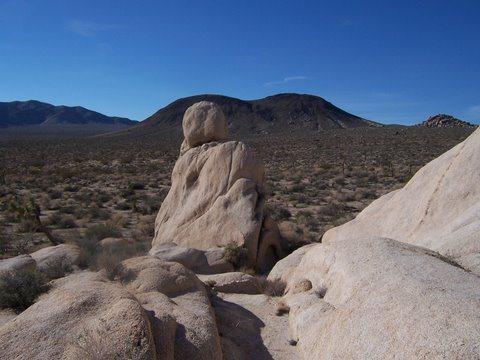

It may be a coincidence, but it is still great timing for REI and the National Park Service.
This week REI, one of the largest outdoor gear and apparel companies in the U.S., announced it would support the National Park Service through a partnership with the National Park Foundation, the charity that helps to fund some of the programs in over 400 national parks. While an exact figure has not been given, REI says the level of commitment will run into the millions of dollars. No word on whether Sally Jewell, the Secretary of Interior who was previously the CEO of REI, had any involvement in this campaign, but the timing is excellent nonetheless.
The celebration started with the launch of Find Your Park, a public awareness campaign that not only commemorates 100 years of the National Park Service, but also seeks to inform citizens about ways in which they can enjoy the parks — and perhaps even enlighten them about one that is closer to them than they may think.
Of course, there is also a marketing component to REI’s support of the National Park Foundation. REI is the “official outdoor retailer” of this centennial celebration. And through at least 2017, REI will sell gear and market programs tailored for its partnership with the national parks at its stores as well as online. Some of the funds REI will funnel to the National Park Foundation will be through travel bookings made through its “Adventures” portal; the company will donate 10 percent of the retail price of booked trips to the foundation through 2016.
Despite the national parks’ economic impact (as in my hometown of Fresno, California, 90 minutes from three of them and where the city finally realized Fresno Yosemite International Airport was a better name than FAT), not to mention their stunning beauty and cultural significance, the last several years have been rough going for our parks. Despite an economic impact that ranges from US$26 billion to US$33 billion (depending on the source), adequate funding is always a battle for national parks year after year. According to the Washington Post, the National Park service has delayed about US$11.5 billion worth of maintenance projects because of budget shortfalls. Of course, with the rising cost of construction labor and materials, such problems will only worsen in the coming years if the parks cannot get the necessary federal funds.
When counting up the national parks budget woes, REI’s program may come across as little more than a Band-Aid. Nevertheless, it’s a Band-Aid that was not there previously, and REI’s funding will help aid programs that can enrich visitors’ experiences when they spend time in our national parks, one of America’s most stunning assets.
Image credit: Leon Kaye
Building a Socially Responsible Company: From the CEO to the Front Desk


By Benjamin Geyerhahn
What do a union advocate, a freelancer and an ex-convict have in common? There’s no punch line here — they’re all successful leaders and social entrepreneurs.
Social entrepreneurship commonly refers to businesses that use the market to fulfill social goals. For example, solar panel companies use the electricity market to serve the mission of delivering clean energy.
But no matter the market, social entrepreneurship involves innovative leaders focused on new ways of achieving social change.
The most impressive leaders understand that social responsibility is more than donating profits to a cause or doing business with higher ethical standards. While those practices are admirable, they are only the beginning of what social entrepreneurship can achieve.
Today’s new generation of social entrepreneurs has reimagined the framework for addressing social problems, focusing on sustainable, scalable ways to make change.
The union advocate
David Rolf, president of the Service Employees International Union Local 775 in Seattle, is going beyond the traditional union model and asking big questions about the future and scope of the union’s mission. Is the union specifically focused on representing the needs of its membership, or should it attempt to improve the lives of all workers? Rolf’s union is working on behalf of workers throughout Washington, and he’s leading the way in union innovation.Rolf successfully led a campaign to push Seattle’s minimum wage to $15 per hour. Although this benefited some of the union’s members, it also improved the lives of all working people in Seattle. Rolf also encourages rethinking the union model at the Workers Lab, which is modeled after Silicon Valley accelerators and is focused on developing self-sustaining organizations that unite workers and improve their lives.
The freelancer
Sara Horowitz, another innovative social entrepreneur, founded the Freelancers Union. A union traditionally organizes employees from the workplace and seeks better pay and benefits on their behalf. Horowitz is organizing people who have no regular employer and working to solve their unique problems.
Indeed, high-quality, low-cost health insurance was a tool of sustainability for the Freelancers Union, but it was also a tool for it to attract members. The product became the organizing principal, but it was only a first step. The Freelancers Union also supports its members with professional development services and legislative support.
Horowitz rethought the union’s target and the tool of its sustainability to create an organization with the power to positively impact the lives of its members. It’s the first of what are commonly referred to as alt-unions and is easily the most successful.
The ex-convict
Frederick Hutson didn't remake an old institution, but he did fix a social problem that few had previously considered. Hutson wanted to address inmates’ isolation from their families. The founder and CEO of Pigeonly knew how much isolation impacted inmates — he served four years in federal prison for trafficking marijuana.
But Hutson made the most of his incarceration. He wrote business plans and came up with the idea of making prison calls less expensive. He understood that he could make a difference by making it easier for inmates to connect with their families.
The core function of Pigeonly directly serves Hutson’s social mission. Pigeonly delivers photos from a relative’s phone to the inmate at a small price, and it provides a tool that allows prisoners to dial local numbers to reach relatives across the country, rather than making expensive long-distance calls that would deplete limited resources.
Leaders tie business functions to the mission
Rolf, Horowitz and Hutson built innovative organizations focused on using new ideas and methods to solve common problems. The mission is the guiding star, but the tactics aren’t dictated by past practices.
In this approach, the social mission of the business naturally trickles down to people at all levels of the organization. For a mid-level marketing associate at Pigeonly, for example, getting more people to use the product means addressing the isolation of prisoners on a larger scale. For an operations associate at the Freelancers Union, delivering a more efficient health plan means helping freelancers and their families achieve stability through reliable healthcare.
When you tie your mission directly to your core business functions, you and your team can focus on effectively delivering high-quality goods and services.
Integrate social entrepreneurship into your company culture
When a company builds innovation and entrepreneurship into its culture, its mission guides that effort — from the CEO to the front desk. Here are three ways to build social responsibility into your company culture:
1. Focus on the mission. Let your core mission drive everything you do. TOMS Shoes began with the goal of matching every pair of shoes purchased with a new pair of shoes for a child in need. The company has since expanded to offering other products, but it’s focus is the same: helping people in need.
2. Reinforce the mission at all employee levels. As the leader, you need to speak directly to all employees so they understand the role the mission plays in the company.
Have conversations about the mission in meetings or through a company newsletter, and celebrate people who actively support the mission. For example, we’ve made it clear at our company that team members will never get pushback for spending too much time helping someone get Medicaid.
3. Hire the right people. To execute a profitable business model that addresses big social problems, you need to hire the right people. You need people who are creative and dedicated enough to take on the challenge of building a business that’s committed to a social mission.
The demand for jobs at companies that serve a larger purpose is growing, especially as more Millennials enter the workforce. Keeping social responsibility at the core of your company’s daily functions will prove to be an incredibly useful recruitment, engagement, and retention tool. Although it might take some adjustment to build social responsibility into your already established company culture, it will lead to a better business in the long run — trust me.
Image credit: Flickr/Yoel Ben-Avraham
Benjamin Geyerhahn is an experienced entrepreneur, a healthcare policy expert, and a member of New York Governor Andrew Cuomo’s Health Benefit Exchange Regional Advisory Committee. He is the founder and CEO of BeneStream, which uses a combination of technology and a multilingual call center to guide employers and employees through the Medicaid enrollment process.
Where Passion and Water Meet: A Student’s Journey to His Dream Green Job


Editor's Note: This post is an excerpt from the University of Wisconsin Sustainable Management blog.
By the UW Sustainable Management team
Can you say, with complete assurance, that you have found your calling in life? Nate Tillis can. He’s an operations manager at a wastewater treatment plant, as well as a soon-to-be college graduate with a Bachelor of Science in Sustainable Management from the University of Wisconsin. And every day, he works to preserve one of the planet’s most precious resources: water.
His journey began in a pizza shop with a friendly sanitarian. Back then, Nate was a teenager in Milwaukee, just out of high school with a wife and a child on the way. He worked in the restaurant, cooking and delivering pizzas, but he knew he had to do something different. He needed a job that would better provide for his family.
A driven, friendly and easy-going guy, Nate quickly formed a friendship with the restaurant’s health inspector, occasionally asking him about sanitation. It was the inspector who suggested an associate's degree program at Milwaukee Area Technical College (MATC). Nate enrolled, intending to become a sanitarian himself. The first year of school involved chemistry and lab work — but it also focused on soil and water.
The force of nature leads to a sustainability career
Water. That really caught Nate’s attention and reminded him of the Tao Te Ching, a short book of Chinese proverbs he has been fascinated with since high school.“I was raised Christian, but I wanted to explore what else was out there. So I read the Koran, the Bible, Bhagavad Gita, and Tao Te Ching. That’s when I had my great awakening. It’s still the book that resonates most with me,” he said.
Taoist philosophy teaches that nature influences our thoughts and behavior and uses the analogy of water often. For Nate, it felt in line with what he wanted to achieve in life and his background in martial arts, which his uncle introduced him to as a kid.
Appreciation for water becomes a full-time job
By the time he finished one year of the MATC program, Nate’s interest in health inspection was overshadowed by his fascination with industrial wastewater.
“I interned at a wastewater plant, and I really liked it!” Once he finished his associate's degree, he applied for a full-time position at the Waukesha Wastewater Treatment Plant and was hired as an operator. Nate worked there for 10 years, learning the ins and outs of the water treatment process.
How does a wastewater plant work? Nate says underground pipes bring all the contaminated water from houses and buildings to the plant. Pumps raise the elevation of the water, and gravity causes it to flow through the rest of the process. Basically, the treatment plant speeds up a river’s natural purification process by creating narrow and wide spots that clean the water, and then discharges it into the Fox River. A large plant like Waukesha’s processes 8 million to 10 million gallons of water per day.
As an operator, Nate did things like open valves, grab water samples, assess how the plant is doing and monitor lab work.
Finding the perfect degree
In 2010, he enrolled in University of Wisconsin Sustainable Management, an online 63-credit bachelor’s completion program. “I always knew I would get my bachelor’s degree. I liked the field I was in, but I wanted to keep going with my education and move forward in my career.”
When he found the UW Sustainable Management program, Nate liked that it was more specific than biology or business, but says, “Ultimately, I enrolled because I wanted to finish my four-year degree.”
As he progressed through the courses, the program became much more than that. “It’s essentially an environmental business degree — a great fit for me. It will make me attractive as a manager, but also keeps in line with ecology and sustainable development.”
Growing a sustainability career
Nate says, “A lot of people don’t think sustainable management relates to wastewater management, but it’s a really good degree to have if you want to move up in the field.”
And move up he has: He took an operations and maintenance supervisor position in Beloit for two years, but returned to Waukesha to be closer to his sons, now ages 10 and 15. The position he took (maintenance supervisor) was a lateral move, but nothing beat living near his family.
Plus, he loves the job he has now. He supervises a crew of 14, all in charge of maintaining the pumps at the plant and at different stations around town. Thousands of pieces of equipment need care to be able to run so the plant can keep performing.
Nate does many things as supervisor, such as schedule maintenance, coordinate training, review specifications of parts, and work on the budget. His crew also responds to storms and flooding emergencies, which can be challenging. Pumping stations around the city sometimes go out and lose power or communication. He and his crew are responsible for getting them back up and running.
Although a four-year degree isn’t required for his position, a University of Wisconsin credential is recognized and respected, and Nate says it definitely boosted his appeal as a job candidate over the other applicants. “I know that overall, it is going to be a big advantage in my career.”
Nate uses skills and knowledge he’s learned from the Sustainable Management program at work almost daily. “Recently, we were going through a major technological upgrade at the plant. Contractors were explaining how the new data system will work, and I was able to ask questions about how the data is stored and how we are going to use that information based on what I learned in the information technology course.”
“I love the people and the challenges. I feel like I’m making a difference. Water is probably our most precious resource — something that I think will take main stage in the future.”
Read the full post on the University of Wisconsin Sustainable Management blog.
Big fashion brands back new textile recycling technology


After years of searching for a solution to the worldwide problem of textile waste, pioneering start-up Worn Again is joining forces with fashion retailer H&M, and luxury, sport & lifestyle group, Kering, to bring to market what it terms "a revolutionary innovation in clothing production and recycling".
The new technology addresses the major barriers in textile-to-textile recycling, namely: how to separate blended fibre garments; and how to separate dyes and other contaminants from polyester and cellulose. Once separated, the aim is for the process to enable the ‘recaptured’ polyester and cellulose from cotton to be spun into new fabric (creating a ‘circular resource model’ for textiles).
H&M and Kering, via its brand Puma, will be monitoring the testing of the technology to see if the process is commercially viable.
“Innovation is what we need to solve our global environmental challenges. Our collaboration with H&M and Worn Again is a great example of this, demonstrating how we can design and deliver a solution that will be fundamental in eradicating textile waste while simultaneously offering a new type of sustainable raw material for our Sport & Lifestyle brands,” commented Marie-Claire Daveu, chief sustainability officer and head of international institutional affairs at Kering.
Pearson demonstrates commitment to equal opportunities in education


The world’s largest learning company is demonstrating its ongoing commitment to equal opportunities in education by joining an online resource for students who need help to read standard print.
Pearson is making thousands of its books available, across Early Years, all Key Stages, GCSE, A-level and BTEC through Load2Learn, a web-based service delivered by the Royal National Institute of Blind People (RNIB) and Dyslexia Action.
As well as PDFs, Load2Learn offers a means to access the most popular titles in Word, EPUB, audio and Braille. Around 10 per cent of school and college students in the UK require texts in an alternative accessible format due to a sight loss condition, dyslexia or another disability.
Maura Moran, Pearson’s head of content management for UK Schools, said: “Being part of Load2Learn allows us as a publisher to demonstrate our commitment to equality of opportunity for all with regards to education. We’re pleased to be able to add to this fantastic online resource which allows students to learn at their own pace and in their own way regardless of any disability.”
Picture credit: © Andris Torms | Dreamstime.com
'Eye-Catching' Gains in Renewable Energy Investment
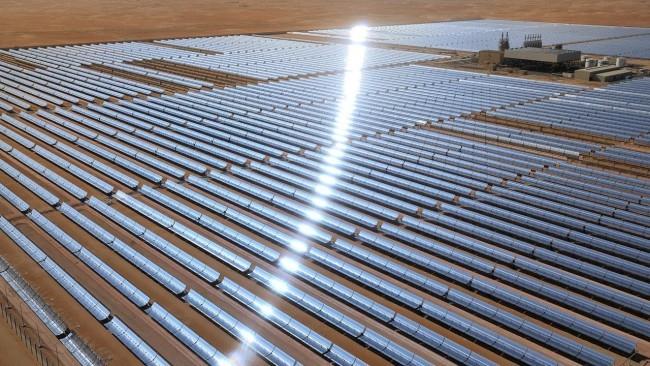

2014 was a year of “eye-catching steps forward for renewable energy,” the United Nations Environment Program (UNEP) highlights in its Global Trends in Renewable Energy Investment 2015 report. Renewable power generation capacity – excluding large-scale hydropower – reached the historic 100-gigawatts level as investment “rallied strongly after two years of decline.”
Renewable energy investment in developing countries – China in particular – were big drivers last year, UNEP points out. Elsewhere, solar financing reached a record high in Japan, while European offshore wind power investment surged higher and set a new annual record.
With costs continuing to decline and performance continuing to improve, renewable energy has thus far been able to meet the challenge posed by lower oil prices, and, more significantly, the downward pressure this exerts on natural gas prices, UNEP notes. UNEP sees further declines in the cost of renewable energy ahead even as a record-shattering low bid price of less than 6 U.S. cents per kilowatt-hour was submitted for a utility-scale solar installation in Dubai.
A headline-grabbing rebound
Particularly notable: Global renewable energy investment, excluding that for large hydro power plants, rebounded from a two-year decline in 2014 -- rising 17 percent to reach $270.2 billion. Last year's total was just 3 percent lower than the record $278.8 billion set in 2011, UNEP highlights. The 2014 renewable energy investment total was even more impressive than that for 2011, given the sharp decline in capital costs of installing new wind and solar photovoltaics that occurred over the intervening three years, UNEP adds.
Overall an estimated 103 gigawatts of new renewable power capacity, excluding large hydro, was built around the world in 2014. That compares 86 GW in 2013 and 80.5 GW in 2011.
Newly installed wind and photovoltaic power capacity dominated last year's additions. New record amounts of 49 GW and 46 GW worth of new wind and solar PV capacity, respectively, were installed worldwide last year, UNEP says.
Investors plowed some $270.2 billion of capital into renewable energy in 2014. Venture capital (VC) funds invested $1 billion in the clean energy sector – 39 percent more than in 2013. Nonetheless, the 2014 VC total was less than half that of 2008 and each year from 2010 to 2012.
Across-the-board gains
Totaling $11.7 billion, renewable energy R&D investment was 2 percent higher year-over-year. Government investments in renewable energy R&D contributed $5.1 billion to the total while private-sector companies contributed $6.6 billion.
Private equity investments in renewable energy companies totaled $1.7 billion last year. That's up 20 percent from 2013, but still far less than the record $6.8 billion they pumped into renewable energy companies back in 2008, UNEP notes.
UNEP's report reveals growing confidence on the part of the broad investing public in making investments in renewable energy companies. Renewable energy companies listed on public stock exchanges rose sharply in 2014, increasing 43 percent to total $15.1 billion, UNEP reports.
The amount of equity capital renewable energy companies raised on public markets in 2014 was the second-highest annual total UNEP has recorded. A rally in renewable energy companies' shares of more than 100 percent from summer 2012 to March 2014 boosted investor confidence, UNEP says.
Asset-based financing for utility-scale renewable energy projects and in small, distributed capacity were the two leading categories of renewable energy investment worldwide last year. The former rose 10 percent year-over-year to reach $170.7 billion. Fueled primarily by newly-installed rooftop solar PV, the latter rose 34 percent to total $73.5 billion.
Solar and wind once again “were runaway leaders in terms of renewable energy investment” in 2014, according to UNEP. Investments in solar energy totaled $149.6 billion – 25 percent higher than the 2013 total and the second-highest figure ever recorded. Wind power investment was up 11 percent year-over-year, reaching $99.5 billion.
*Image credits: 1) DEWA; 2) "Global Trends in Renewable Energy Investment 2015," UNEP